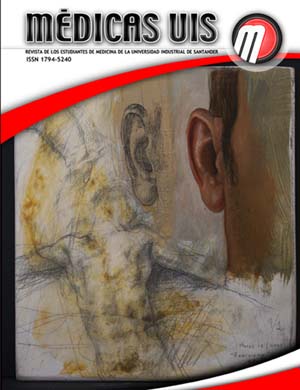Resumen
Se estima que entre el 0,8 y 1,42% de la población general presenta algún grado de disfunción olfativa. En estudios epidemiológicos de población general han demostrado que esto aumenta con la edad, llegando a afectar al 29% de las personas entre 70 y 79 años. Las causas más comunes del défi cit de olfacción en el adulto mayor son trauma de cráneo, inflamación del tracto respiratorio alto de etiología tanto infecciosa como alérgica y las enfermedades degenerativas del sistema nervioso central como la enfermedad de Alzheimer y de Parkinson. El 60 al 90% de los pacientes con Enfermedad de Párkinson tiene déficit olfativo, siendo uno de los síntomas más frecuentes de la enfermedad. Se presenta en forma precoz y bilateral, el déficit en general no es a todos los olores, permaneciendo la habilidad de reconocer algunos. En esta revisión, se caracteriza la forma de presentación de este trastorno y su impacto como un marcador biológico en la enfermedad de Parkinson.
Palabras clave: Olfacción. Enfermedad de Parkinson. Disfunción olfativa. Enfermedades degenerativas. Sistema nervioso central.
Referencias
2. Murphy C, Schubert CR, Cruickshanks KJ, Klein BE, Klein R, Nondahl DM. Prevalence of olfactory impairment in older adults. JAMA 2002 Nov 13;288(18):2307-12.
3. Mesholam RI, Moberg PJ, Mahr RN, Doty RL. Olfaction in neurodegenerative disease: a meta-analysis of olfactory functioning in Alzheimer’s and Parkinson’s diseases. Arch Neurol 1998 Jan;55(1):84-90.
4. Stern MB, Doty RL, Dotti M, et al, Olfactory function in Parkinson’s disease subtypes. Neurology 1994 Feb;44(2):266-8.
5. Double KL, Rowe DB, Hayes M, et al, Identifying the pattern of olfactory deficits in Parkinson disease using the brief smell identification test. Arch Neurol 2003 Apr;60(4):545-9.
6. Handbook of Olfaction and Gustation, 2nd edition, revised and expanded R.L. Doty, Ed., Marcel Dekker, 2003, New York
7. Katzenschlager R, Lees AJ. Olfaction and Parkinson’s syndromes: its role in differential diagnosis. Curr Opin Neurol 2004 Aug;17(4):417-23.
8. Markopoulou K, Larsen KW, Wszolek EK, et al , Olfactory dysfunction in familial parkinsonism. Neurology 1997 Nov;49(5):1262-7.
9. Montgomery EB Jr, Baker KB, Lyons K, Koller WC, Abnormal performance on the PD test battery by asymptomatic first-degree relatives. Neurology 1999 Mar 10;52(4):757-62.
10. Montgomery EB Jr, Olfaction and early detection of Parkinson’s disease. Ann Neurol 2005 Jan;57(1):157-8.
11. Siderowf A, Newberg A, Chou KL, et al, [99mTc]TRODAT-1 SPECT imaging correlates with odor identification in early Parkinson disease. Neurology 2005 May 24;64(10):1716-20.
12. Sommer U, Hummel T, Cormann K, et al, Detection of presymptomatic Parkinson’s disease: combining smell tests, transcranial sonography, and SPECT. Mov Disord 2004 Oct;19(10):1196-202.
13. Berendse HW, Booij J, Francot CM, et al , Subclinical dopaminergic dysfunction in asymptomatic Parkinson’s disease patients’ relatives with a decreased sense of smell. Ann Neurol 2001 Jul;50(1):34-41.
14. Marras C, Goldman S, Smith A, et al, Smell identification ability in twin pairs discordant for Parkinson’s disease. Mov Disord 2005 Jun;20(6):687-93.SUMMARYOlfaction defi ci t in parkinson disease: a symptom to considerate in clinical practice. Between 0,8 to 1,42% of the population presents some grade of smell dysfunction. Several epidemiological studies have demonstrated that this increases with the age, affecting to 29% of subjects between 70 and 79 years. The more common causes of this dysfunction are skull trauma, infl ammation of upper respiratory tract of infectious or allergic etiologies and the degenerative diseases of the central nervous system, mainly Alzheimer and Parkinson disease. Between 60 to 90% of the patients with Parkinson Disease have smell defi cit, being one of the more common symptoms in this disease. Usually this smell dysfunction is presented bilaterally and it appears early in the course of the disease. In this review is characterized the clinical presentation of this dysfunction and its impact as a biological marker in the PD. MÉDICAS UIS 2007;20(3):185-9.Keywords: Olfaction. Parkinson disease. Smell dysfunction. Degenerative disease. Central nervous system.
